Deer
Medicine Rock
I
meant to put these up ages ago. These jpgs have been
sitting on my computer staring at me for a looong time.
So I finally got tired of being lazy and put them up.
;-)
These
are off my video camera so apologies for lack of crispness.
The
first video frame is of Deer Medicine Rock itself. Deer
Medicine Rock currently sits on Jack Bailey's farm just
on the north side of the Northern Cheyenne Rez on the
road from Lame Deer. His family has owned the land since
about 1878.
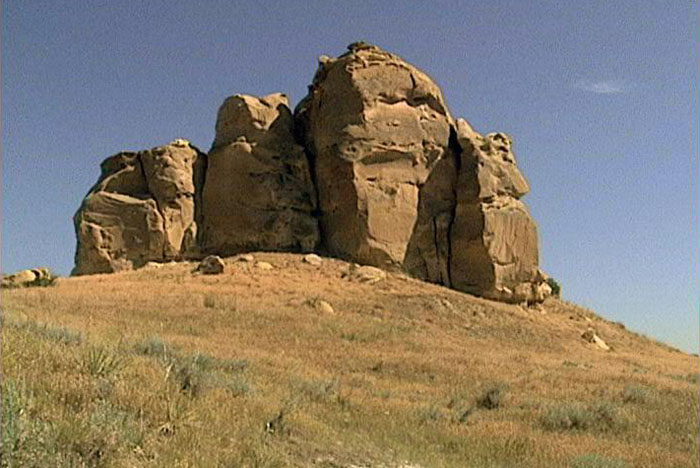
Floyd
Clown, Doug War Eagle, and Don Red Thunder, all of the
Clown family, scraped together the gas money to go see
Crazy Horse's carving of his vision of his death. It
is at the Deer Medicine Rock Sun dance grounds. The
three had never been to the sun dance grounds but had
only heard of it and Crazy Horse's carving in stories
that their grandfather, Ed Clown, had told them. Jack
Bailey, who has seen literally thousands of visitors
at his farm who come to see Deer Medicine Rock, greeted
them. They told him they were there to find Crazy Horse's
death vision and that it was on the belly of a rock
that was shaped like an owl. After all these years,
and Jack is in his 70s, nobody had noticed or commented
that the rock in question looked like an owl. But indeed
it does.
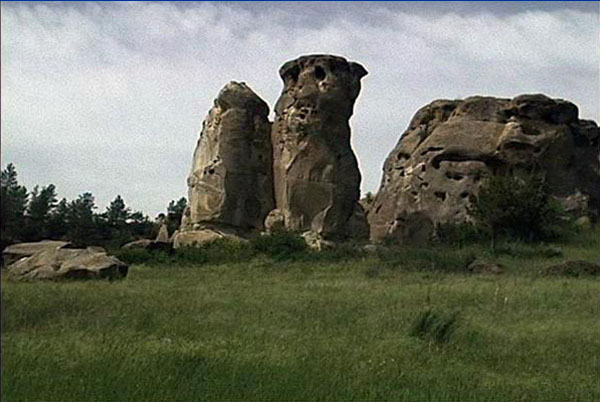
On
the belly of the owl is carved the story of his death.
This was new to Jack who had always heard the Cheyenne
version saying it was a priest that was talking to the
Indians. But after this particular visit he doesn't
believe that anymore. In shot one Doug points out how
the horse hooves are standing up. That means life or
he was alive at the beginning of the carving.
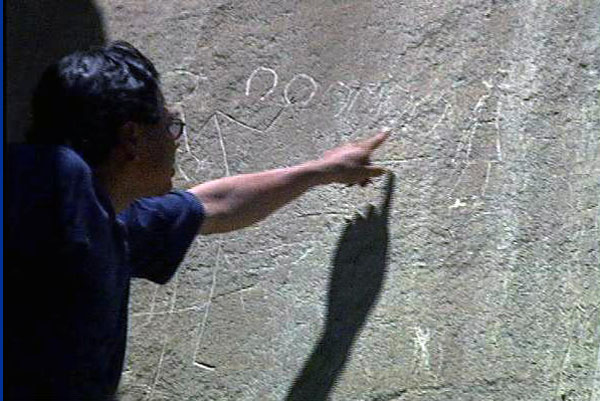
In
the next part of the carving their are two spear like
objects entering Crazy Horse's self portrait about the
liver and kidney area. This represents the stab wounds
inflicted by the bayonet.
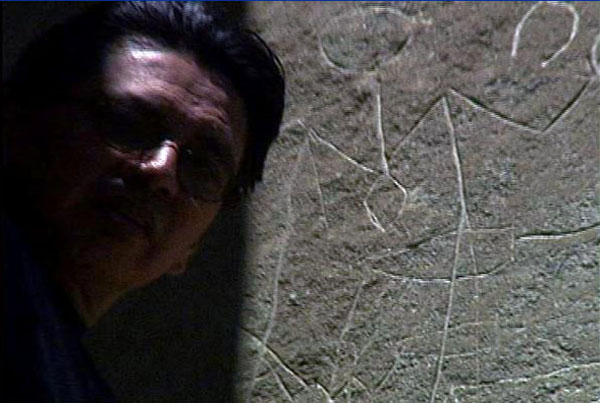
As
we study the drawing further, Doug points out a sign
within the carving that he would be betrayed or that
it would happen behind his back. We also see the first
horse hoof laying sideways just underneath the two spears.
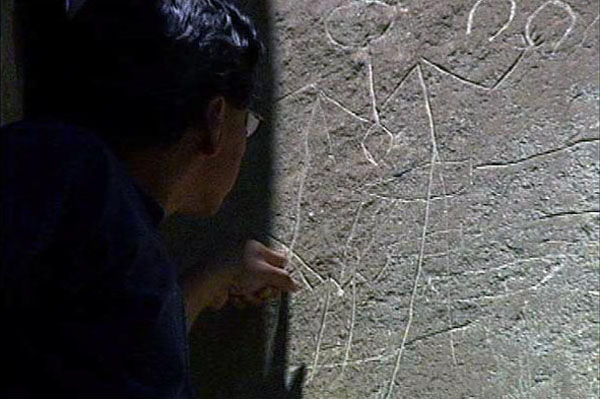
In
this portion of the drawing we see a long line of horse
hooves laying down. This means he lost his life. Standing
on top of the horse hooves is a white man with a hat.
This is what the Cheyenne thought was a priest. But
the Clown family says this is Dr McGillicuddy, the doctor
that tried to save his life. To the right of the man
with the hat is another figure standing directly in
the fallen horse hooves. He represents Little Big Man
according to the family.
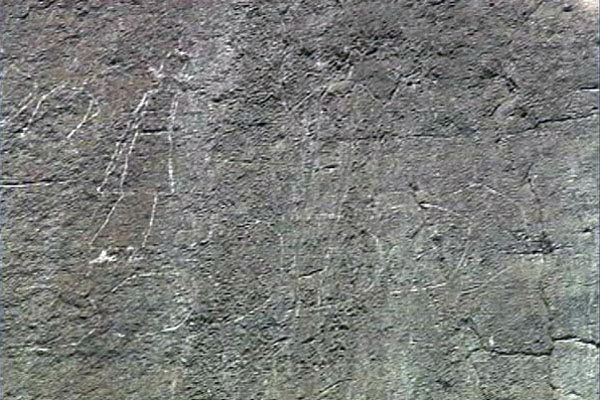
And
here's a picture of Dr McGillycuddy blown up from a
group photo taken at Camp Robinson in 1877. I stumbled
on this earlier this year. Notice the hat and the coat.
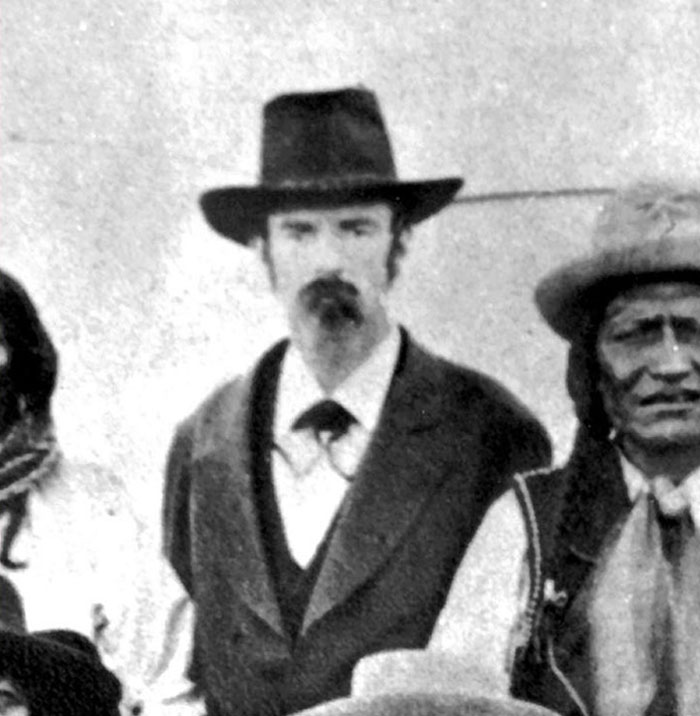
In
the last part of the carving is the private who stabbed
Crazy Horse. Although it is tough to make out due to
the light and some of the carving is shallower than
other parts, the private is on a parallel line with
Little Big Man.
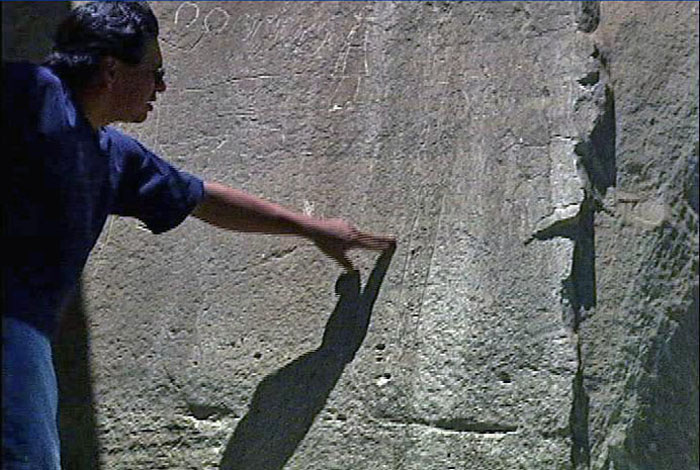
This
is just a little closer look at the private with a line
representing a bayonet.
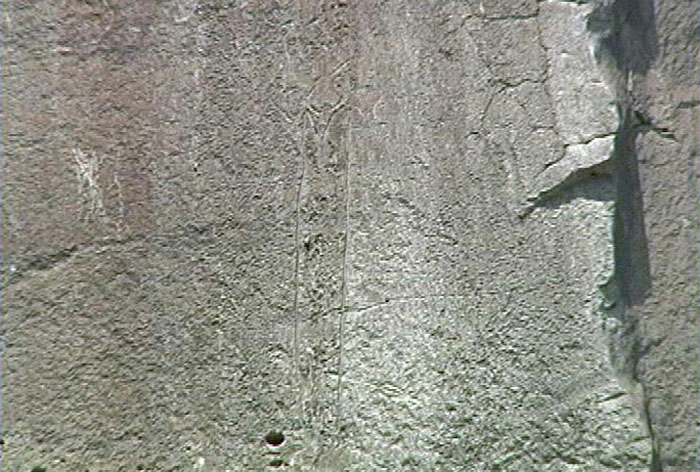
Back
on Deer Medicine Rock here is a calendar documenting
their stay. The circle represents a day. The line divides
the circle into day and night. There are six lines drawn
from the circle. This means they camped at the Sun Dance
ground for six days. Doug War Eagle is the source.
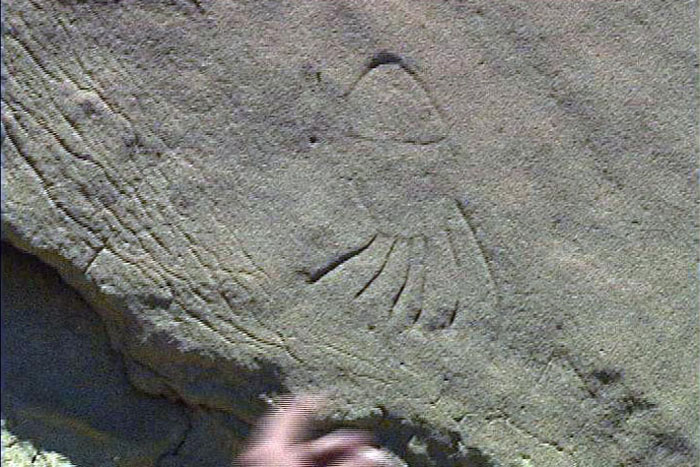
Here's
another drawing on Deer Medicine Rock that pertains
to their family. I wasn't able to include this picture
in the documentary as I seem to have more info than
room on my DVDs. Maybe I'll switch sides and write a
book (lol). This is supposed to be Bear With Horns.
He was mortally wounded at the Battle of the Little
Bighorn and was kept alive for four days with 'bear
medicine' and died at Slim Buttes. The bear is considered
the healing animal for the Lakota. It is the animal
that lead them to their medicines. When a bear was sick
and it showed in his feces, then they would follow to
see what roots he would dig up to cure himself. This
would cue the Lakota to use the same medicine on themselves.
So inside Bear With Horns is another bear. It represents
the bear medicine given to him by a medicine man who
had followed a wounded bear and knew what medicine would
keep him alive, albeit temporarily.
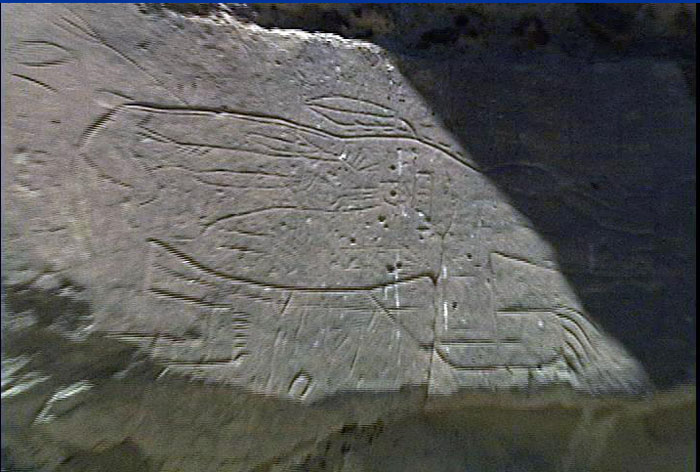
This
next picture is just Rosebud Creek for all of you who
have never seen it. A beaver decided to ham it up for
my video camera.
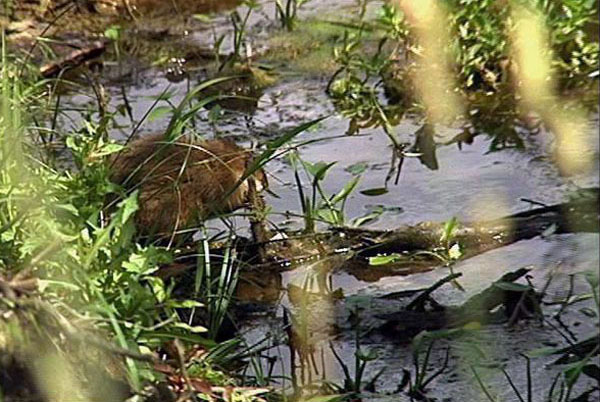
And
finally here is what the Little Big Horn River area looks
like in the early morning. I took this shot just after
dawn on June 25. I thought it interesting because I had
never read anyone talking about the morning mist when
looking off at the village from the Crow's Nest.
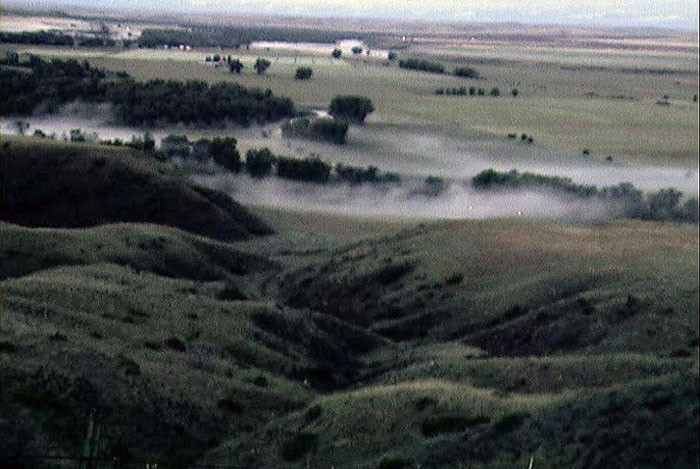
For
those who wish to visit Deer Medicine Rock you have
to call Jack Bailey first. He's been an outstanding
caretaker of this treasure and if his family ever sells
the land I would hope the state or feds would step in
to purchase the Deer Medicine Rock area. When I have
more time I'll post Ernie LaPointe's stories and pictures
off the video from the Smithsonian.
—
Brock